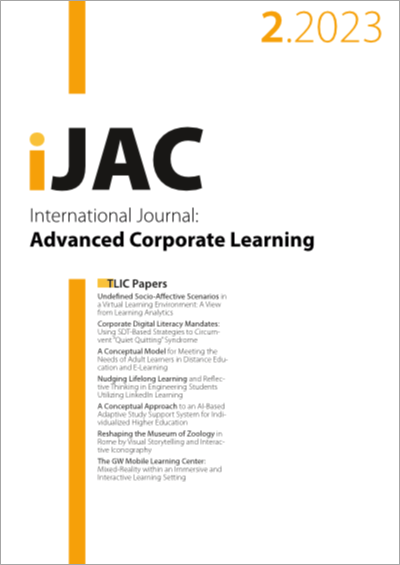Corporate Digital Literacy Mandates
Using SDT-Based Strategies to Circumvent “Quiet Quitting” Syndrome
DOI:
https://doi.org/10.3991/ijac.v16i2.35747Keywords:
affective experiential learn, behaviorism, corporate social media, quiet quitting, Spiral Dynamic TheoryAbstract
Envision an employee showing up faithfully every day for work but cognitively checked out every minute (i.e., quiet quitting). This article adapts a futurist perspective to describe the adult education pedagogy of experiential learning in juxtaposition to the limitations of behaviorist employee training incentives. The authors conceptually apply Spiral Dynamic Theory (SDT) based predictive strategies to capitalize on the assumptions of intrinsic and extrinsic motivation themes among contemporary adult workers. The field of Adult and Continuing Education caters its teaching and learning to people who are 25 years of age and older. As employees, they bring to the corporate work environment a unique set of skills and life experiences that require pedagogical delivery that is innovative and motivating. Research shows that older adults are often technology averse. Therefore, scaffolding the employee’s use of technology and social media as expectations of the work tasks could help improve low digital literacy and increase self-efficacy. This paper offers Spiral Dynamic Theory (SDT) as an instrument for adult training and professional development design.
Downloads
Published
How to Cite
Issue
Section
License
Copyright (c) 2023 Lisa Brown, Pamela McCray, Jeff Neal, Lisa Caldwell-Serges

This work is licensed under a Creative Commons Attribution 4.0 International License.



